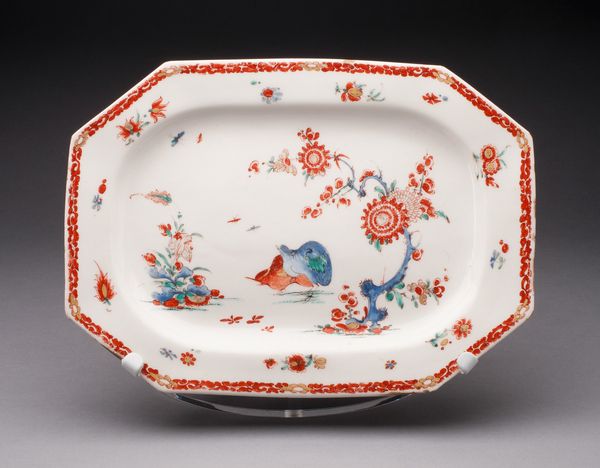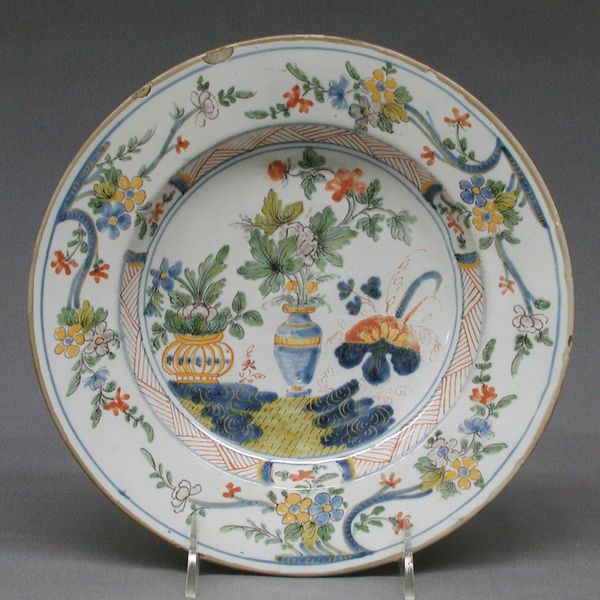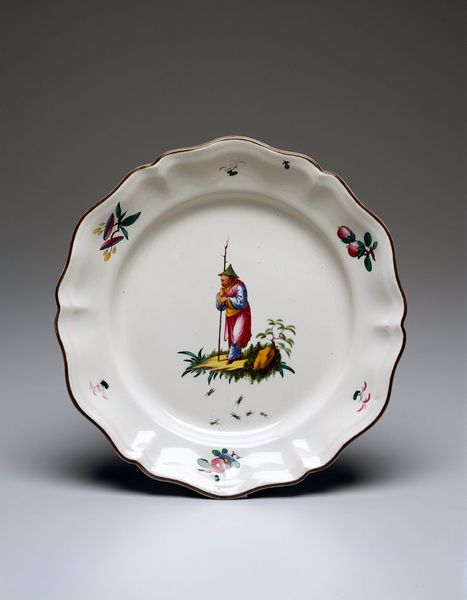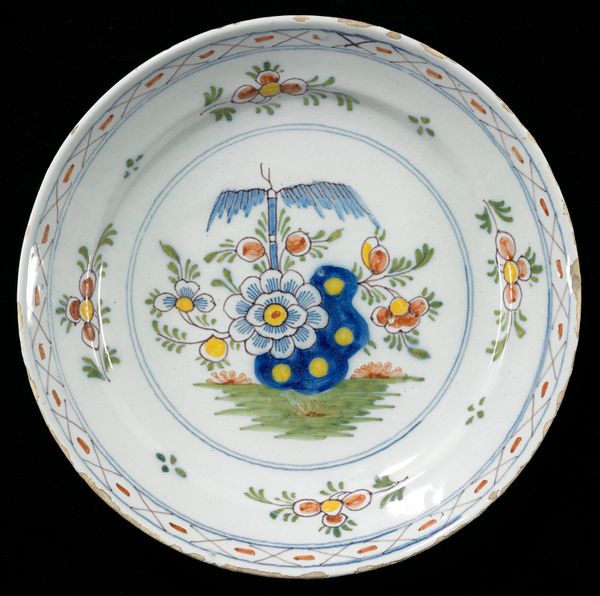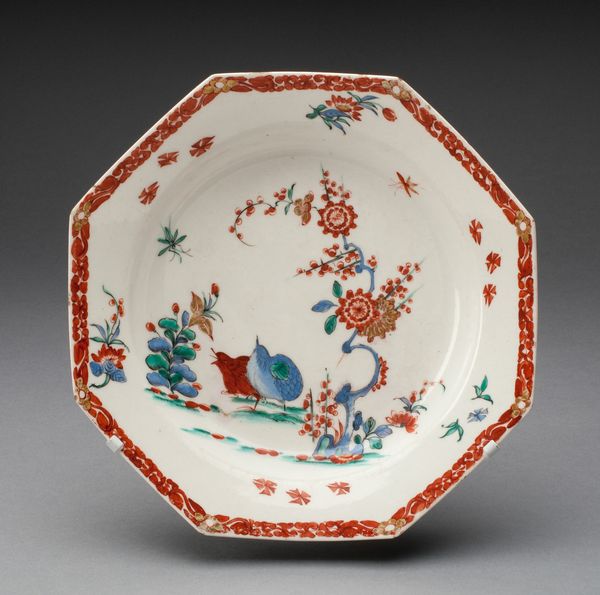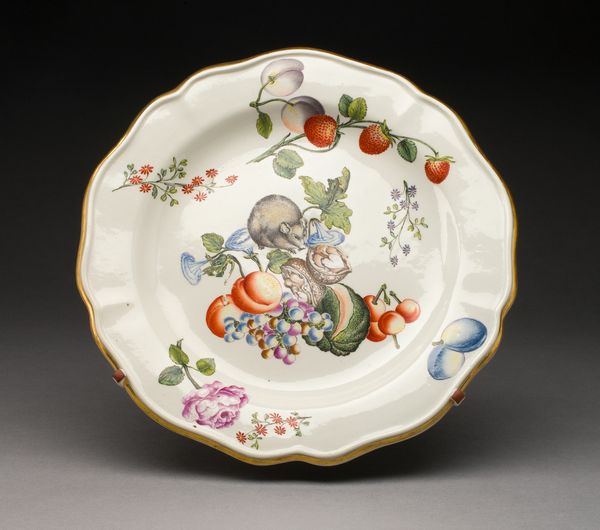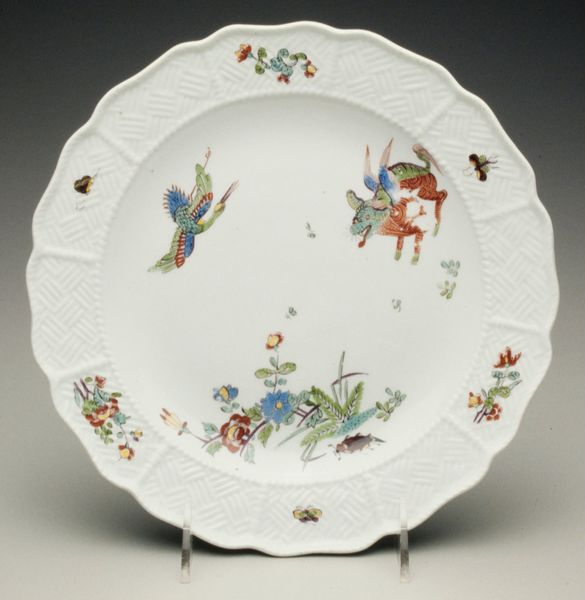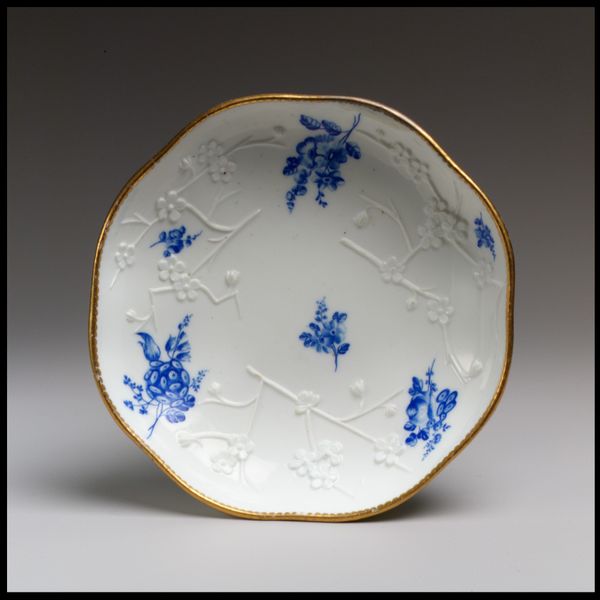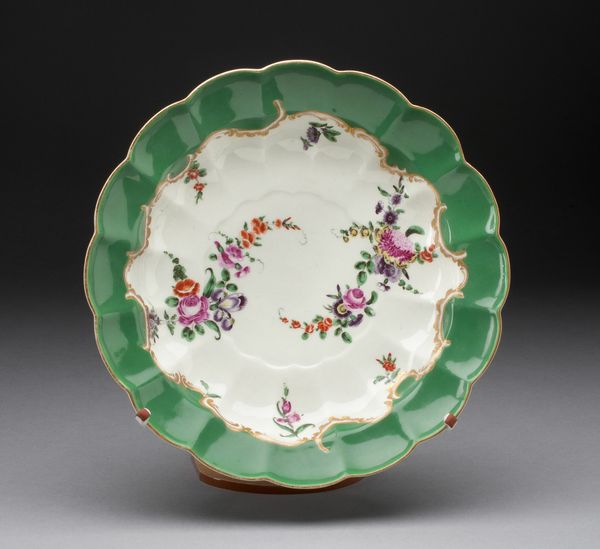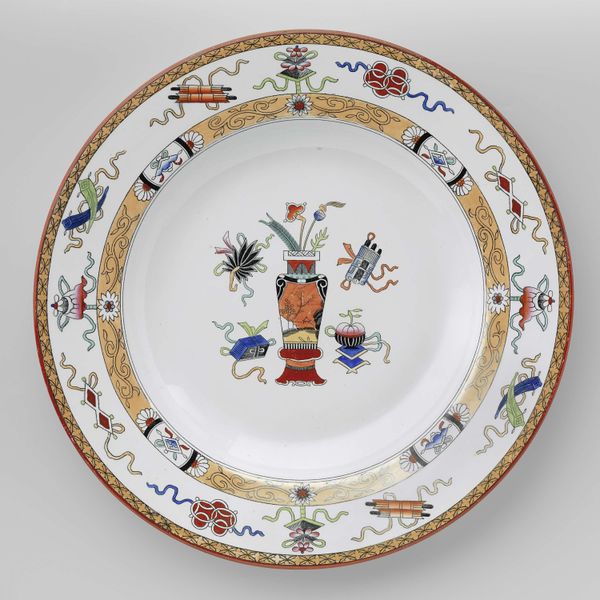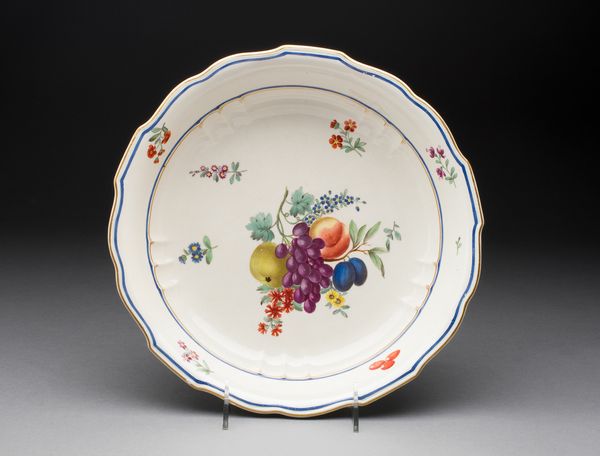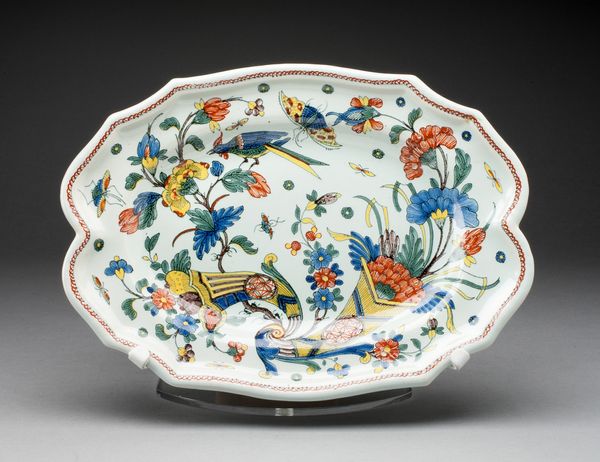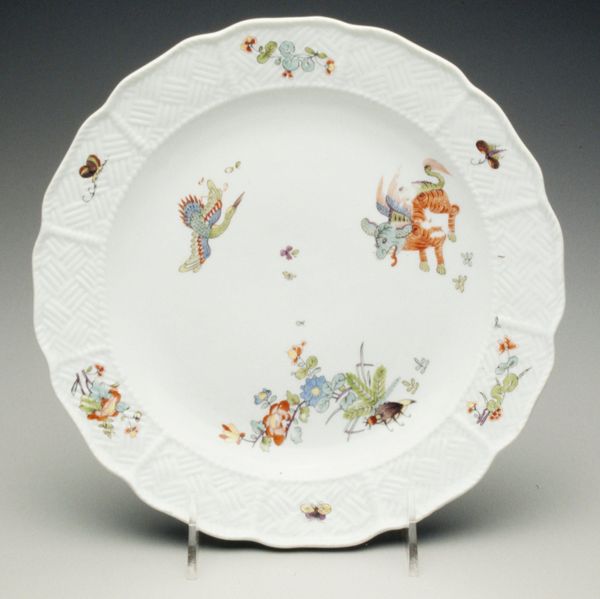
painting, ceramic, porcelain, sculpture
#
painting
#
ceramic
#
bird
#
flower
#
porcelain
#
sculpture
#
ceramic
#
decorative-art
#
rococo
Dimensions: Diameter: 9 1/4 in. (23.5 cm)
Copyright: Public Domain
Curator: Standing before us is an exquisite plate, crafted between 1755 and 1765 by the Tournai manufactory. It’s porcelain, decorated with delicate paintings. Editor: My first thought is, what an elaborate celebration of…nothing in particular! It's a world of pure delight and carefree indulgence. Curator: Absolutely. Tournai porcelain was popular amongst the aristocracy. Rococo was an aesthetic aligned with the status quo, prioritizing lightness and ornamentation in a society that very explicitly rewarded wealth and power. The floral motifs were particularly favored as representations of feminized fragility. Editor: And that visual language continues even now! Think of the way floral imagery has been continually taken up to imply delicacy or ephemerality. Consider the little bird, too; the symbolism associated with flight, freedom, and even spirituality— all rendered here on a surface meant to contain food. Curator: A surface used by elite families who would use these displays to communicate social values. The very act of domesticating these birds, for instance, becomes a commentary on controlling the natural world. It seems at odds with some interpretations of Rococo as merely frivolous. Editor: Agreed. Looking closer at the motifs, I also find myself thinking about how images from Chinese porcelain had already permeated Western visual culture at this time. We have similar branches of stylized plum blossoms— but also distinct divergences, of course. It’s this visual intermingling. Curator: Yes, that points to a historical phenomenon we understand now as “chinoiserie”—the European interpretation of Chinese and other East Asian artistic traditions. The cultural exchange happened between continents, although it should also be considered that colonization has an impact on our interpretation of these intercultural encounters. Editor: This single plate becomes a site for exploring a great deal of history. You have art meeting daily life. You also have symbol meeting context. Ultimately, for me, the piece prompts me to be highly attuned to what it feels like to find yourself at the juncture of worlds. Curator: Precisely, understanding it as a document of complex networks involving cultural identity, power dynamics, and aesthetics is crucial for our experience today.
Comments
No comments
Be the first to comment and join the conversation on the ultimate creative platform.
